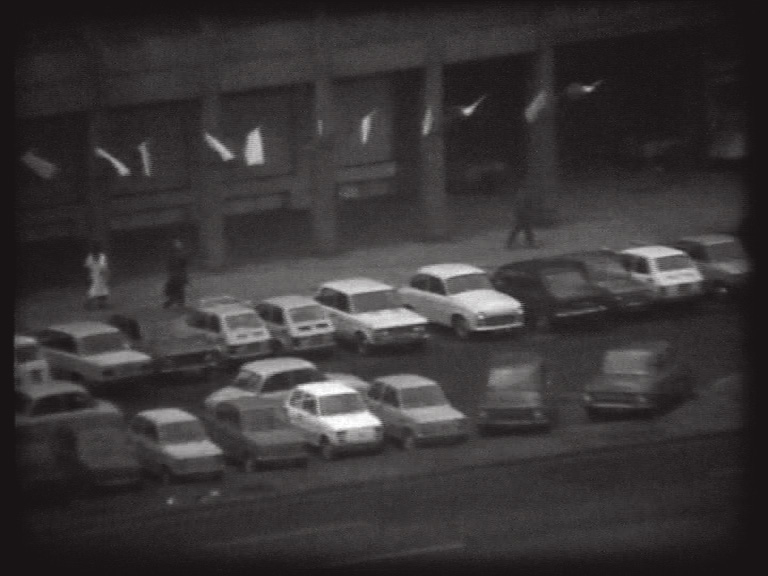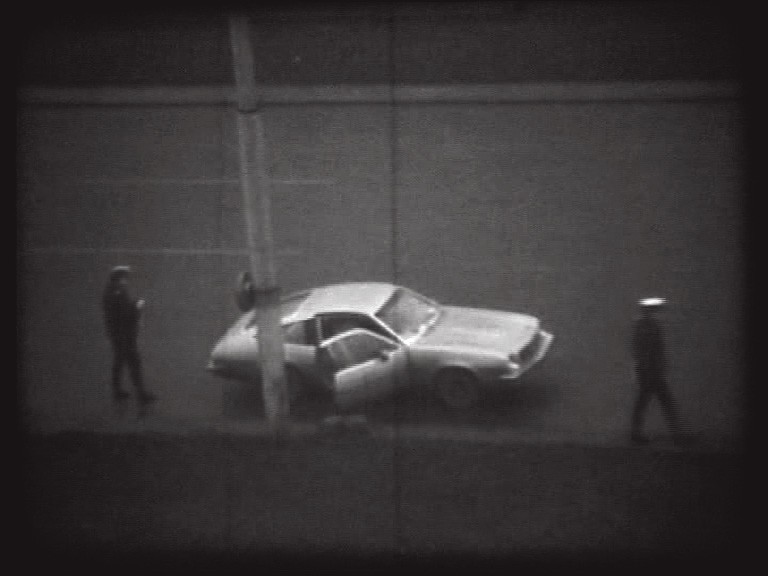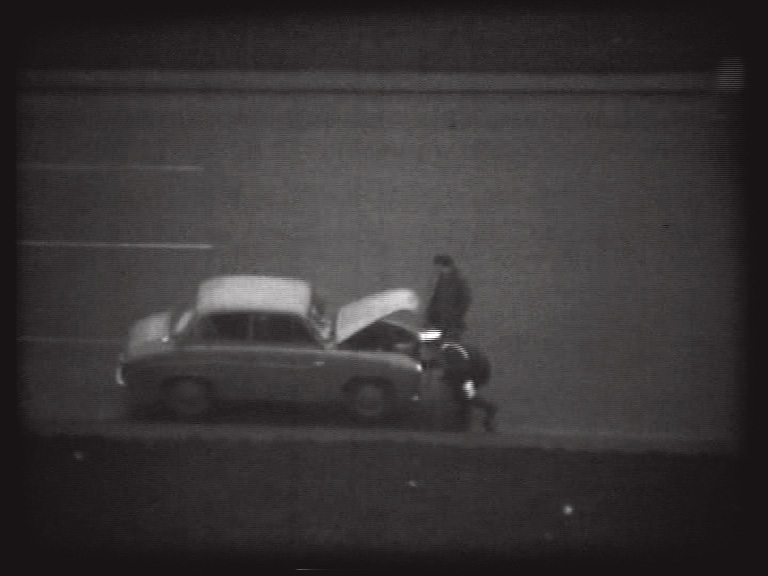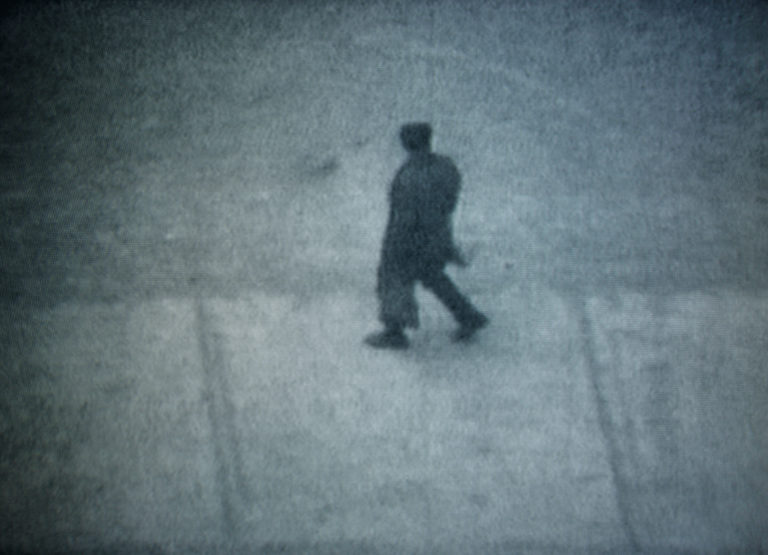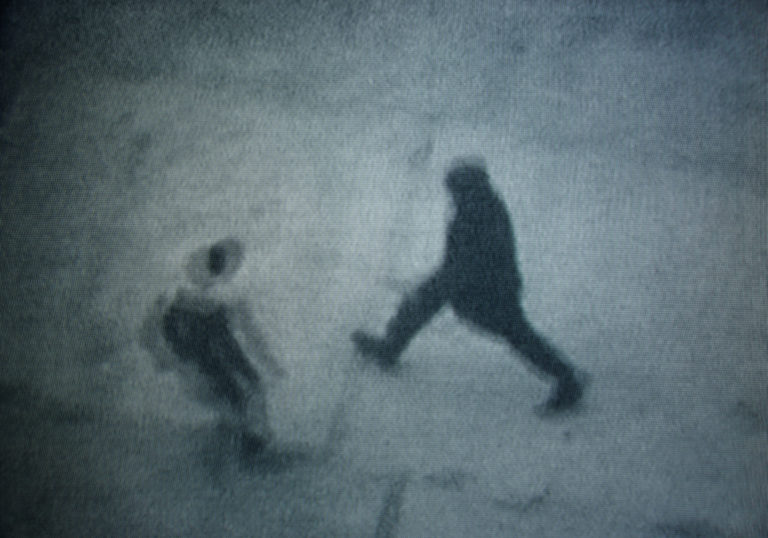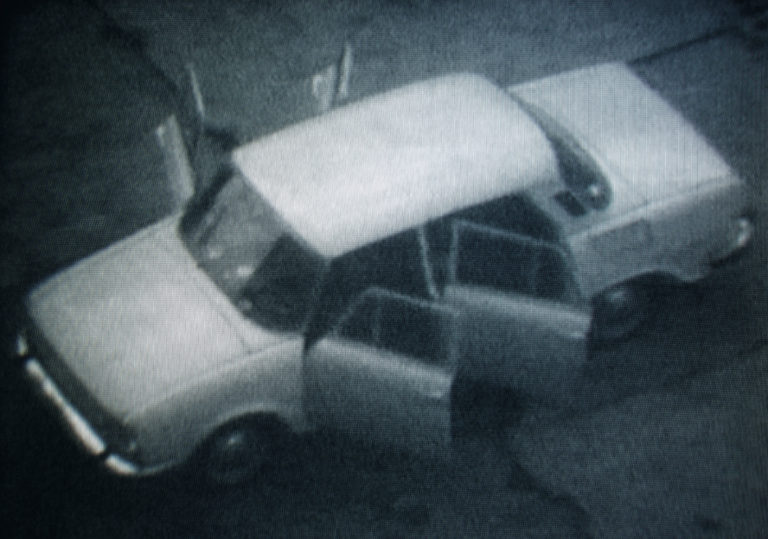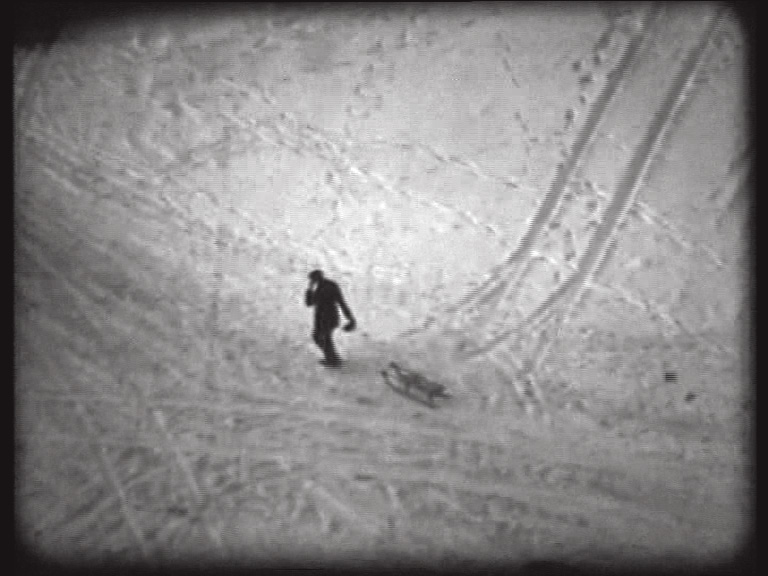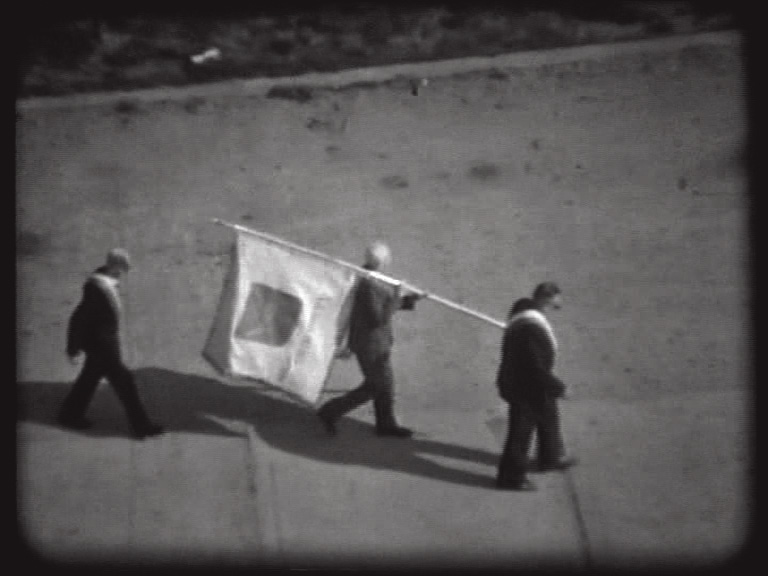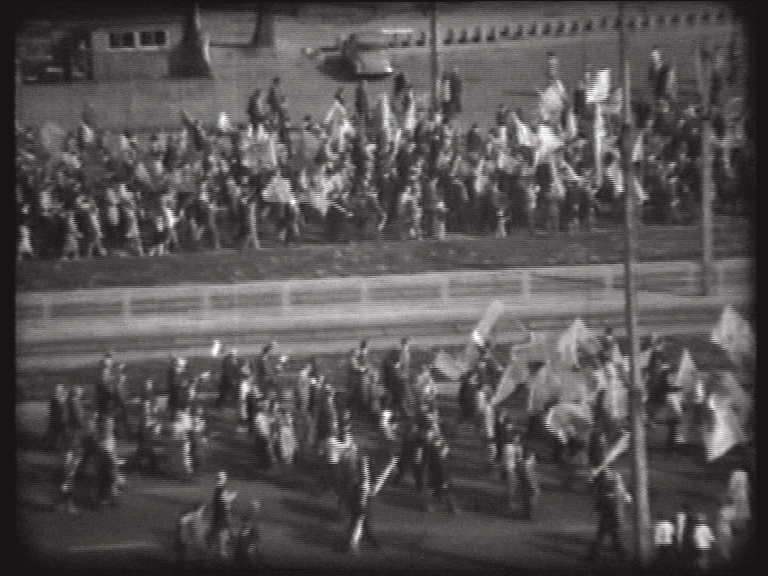wideo, 16 mm, 20''
1978–1999
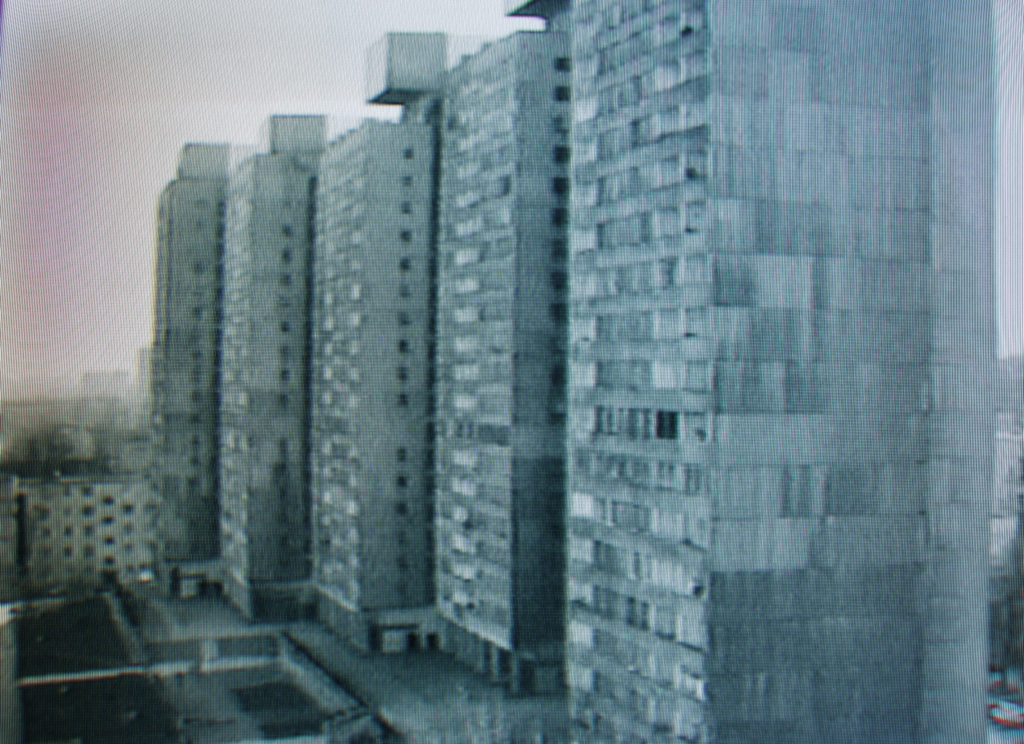
One of the artist’s best-known films, shot from the window of his flat on the ninth floor of a 20-storey tower block in downtown Łódź, in a housing estate known as ‘Manhattan’, it records various goings-on in the public square below over a time-span of 22 years. Made initially on 16 mm film, then from the mid-1980s on video, the 20-minute film shows roughly the final decade of communism and the first of free-market democracy. Successive scenes show a changing economic, social, political and symbolic order. The street name changes, the square is transformed into a parking lot – first public, then privately owned. The film ends when the capitalist economy steps in and the construction of a luxury hotel begins. From My Window combines documentary with fiction, an objective account of reality with its authorial interpretation. Originally silent, screened without a soundtrack, it was commented on live by the creator, always telling a slightly different story. The soundtrack added in 1999 is a projection of the Robakowski’s thoughts on the reality recorded in the film; in his comments on the different scenes, the artist often invents false identities for the people portrayed. He ceases to be merely a witness of events and becomes instead a narrator:
My name is Józef Robakowski. I live in a large tower block at 19 Mickiewicza Street, on the ninth floor. The building has a whopping 20 storeys – it’s magnificent – located in the city centre. We proudly refer to the whole estate as the ‘Łódź Manhattan’. In 1978 I started filming the great concrete square stretching in front of my windows. It will be the protagonist of this film, with its events and my neighbours, whom I like to watch, looking out with the camera from my window from time to time.
Robakowski captures images of daily activities: people returning home from work, parking their cars, going shopping and walking their dogs. These are accompanied by his voice, offering tongue-in-cheek, faux-live commentary on his neighbours’ lives and the absurdities of People’s Poland, its ‘coarseness and ideological pomp’. Over time, new residents move in and new car brands appear, with everyday events, political rituals, May Day parades and police raids providing a visual score for the personal narrative. The political is a dimension of the reality at hand, and the artist responds with a personal narrative, a private scenario through which, in hindsight, this reality is perceived.
